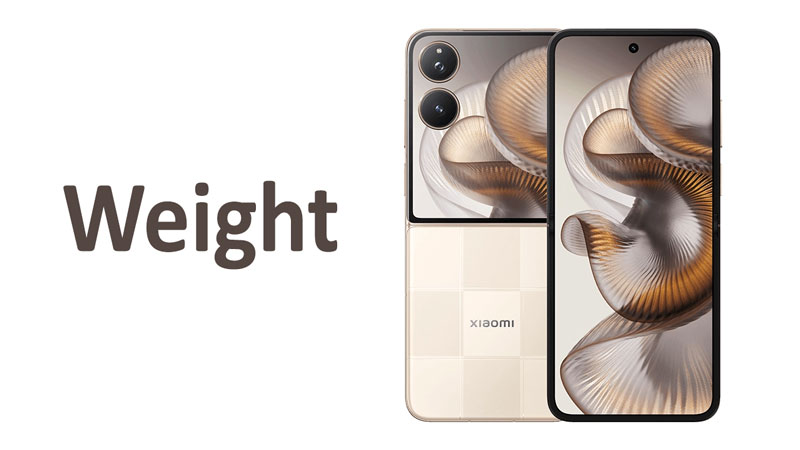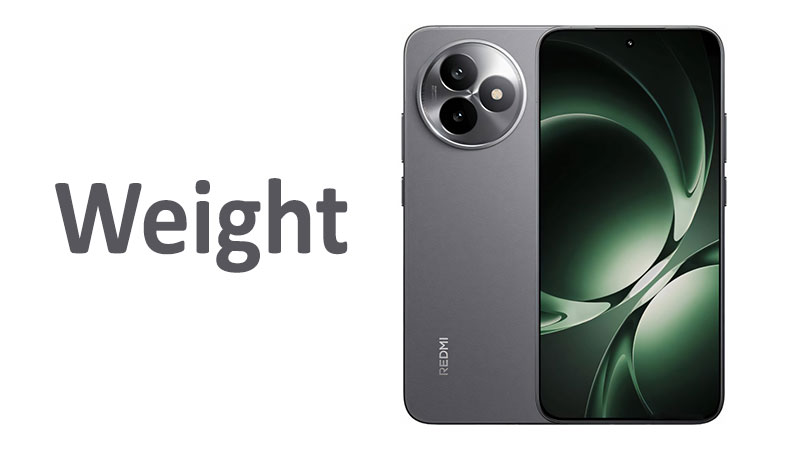The Apple iPhone 15 weight is a crucial feature defining its user experience and portability. This specific mass is the result of Apple’s continuous refinement in material science. It represents a precise balance between screen size, battery capacity, and premium build quality. Understanding the exact mass of the iPhone 15 is vital for prospective buyers. The phone’s weight affects pocketability and daily comfort significantly. This comprehensive article analyzes the iPhone 15 mass in detail. We explore the 171-gram figure using specialized comparisons and ergonomic insights. This guarantees readers receive all necessary information for an informed buying decision.
The Core Specification: 171g (6.03 oz)
The official mass of the standard Apple iPhone 15 is 171 grams. This weight firmly places it in the lightweight flagship category. This mass is deliberately chosen for maximum user comfort and efficiency. It achieves a delicate equilibrium of components and size. The 171g weight is a testament to Apple’s engineering prowess.
The Significance of 171 Grams
The 171g figure is important for several reasons. It ensures the phone feels solid and high-quality without being burdensome. Keeping the mass low is a major design priority for the standard iPhone. This lightness makes the device feel agile and easy to handle.
The optimized mass prevents fatigue during long periods of use. Users appreciate this lightweight design during extended phone calls or video consumption. The 171g specification confirms the phone is perfectly suited for daily portability.
The Ounce Measurement: 6.03 oz
For consumers who prefer imperial measurements, the weight is 6.03 ounces. This figure remains very low for a modern smartphone. Many competitor models often exceed seven ounces easily. A mass of 6.03 oz suggests exceptional design and material choices.
This low ounce measurement contributes to the iPhone 15’s pocket-friendly nature. The phone slips easily into pockets without causing noticeable drag. It offers a premium feel while avoiding the bulk of much heavier devices. The 6.03 oz weight is key to its ergonomic appeal.
Weight Distribution and Balance
The total mass of 171g is only one part of the story. Apple engineers focus heavily on weight distribution. The mass is evenly balanced across the device’s frame. This equal distribution makes the phone feel lighter than its official 171g weight.
Superior balance minimizes any awkwardness during one-handed use. It prevents the phone from feeling top-heavy or bottom-heavy. This careful optimization enhances the practical comfort of the 171g device. Consequently, handling the phone feels natural and effortless.
Engineering and Materials Behind the 171g Mass
The precise 171g weight of the iPhone 15 is not arbitrary. It results from specific material selection and internal component organization. Apple prioritizes lightweight, high-strength materials in the standard model.
The Aerospace-Grade Aluminum Frame
Apple utilizes a high-grade aluminum alloy for the iPhone 15 frame. This material provides outstanding structural integrity and durability. Crucially, aluminum is significantly lighter than the stainless steel used in the Pro models. This material choice allows Apple to save crucial grams.
The aluminum frame is robust yet contributes minimally to the total mass. This engineering decision is essential for hitting the 171g target. It maintains the phone’s strength while maximizing portability. The frame is a major factor in the device’s lightweight appeal.
Glass Panel Optimization
The front and back panels are protected by specialized glass. This material is both strong and engineered for reduced mass. Apple works to minimize the thickness of the glass layers. This reduces the total weight contribution from the display assembly.
Using durable, lightweight glass is an important strategy. It ensures the phone remains tough against accidental drops. However, it still allows the device to maintain its low 171g mass. This optimization is a fundamental design principle.
Battery Density and Efficiency
The iPhone 15 requires a substantial battery for all-day performance. A larger battery inherently adds more mass to the device structure. The 171g figure indicates Apple employs a high energy density battery cell. This provides maximum power storage with minimal physical weight.
The focus is always on energy density per gram of mass. This allows the iPhone 15 to maintain great battery life. It does this while successfully keeping the total weight at 171g. This trade-off between power and portability is skillfully managed.
Specialized Comparisons: iPhone 15 vs. Previous Generations
Comparing the iPhone 15 weight to its predecessors highlights Apple’s design evolution. This comparison shows the commitment to lightweight construction. It also reveals the subtle shifts in component size.
iPhone 15 (171g) vs. iPhone 14 (172g)
The iPhone 15 is slightly lighter than its direct predecessor, the iPhone 14. The difference is only 1 gram (172g vs. 171g). This minimal reduction is a feat of modern engineering. It shows Apple’s continuous pursuit of optimization. Even minor component redesigns can result in slight mass changes.
The slight weight loss is negligible for the average user. However, it confirms that new features did not add weight. The S-series models often maintain similar weights to their immediate predecessors. This ensures a consistent feel for upgrading users.
iPhone 15 (171g) vs. Older Flagships
Older iPhone models often showed greater variability in weight. The iPhone 15 maintains the lightweight design philosophy established in recent years. Older devices might have used different materials or battery sizes. The consistent 171g weight shows a matured design standard.
Users upgrading from a much older, heavier model will notice a significant difference. The 171g mass feels remarkably nimble by comparison. This difference makes the new iPhone an excellent choice for a physical upgrade.
The iPhone SE Comparison
The iPhone SE series is Apple’s true lightweight champion. The SE model is much smaller and significantly lighter than the iPhone 15. The SE is chosen for maximum portability and compactness. The iPhone 15 (171g) is larger and slightly heavier.
The extra mass in the iPhone 15 provides a larger screen and better battery life. Users decide between the ultimate compactness of the SE. They weigh it against the increased screen utility of the 171g iPhone 15. The 171g device offers a much superior modern viewing experience.
Specialized Comparisons: iPhone 15 vs. Pro and Plus Models
The 171g mass clearly positions the iPhone 15 within the larger family. It serves as the featherlight entry point among the flagship lineup.
iPhone 15 (171g) vs. iPhone 15 Plus (Heavier)
The iPhone 15 Plus is significantly heavier than the standard 171g model. The Plus model features a much larger display and a massive battery. The difference in mass between the two is immediately noticeable. The Plus is chosen for maximum screen real estate and battery endurance.
The iPhone 15 prioritizes ease of handling and one-handed use. It avoids the bulk associated with the larger Plus device. Buyers must choose between the portability of 171g. They must weigh this against the size advantage of the Plus model.
iPhone 15 (171g) vs. iPhone 15 Pro (Heavier)
The iPhone 15 Pro is also heavier than the standard 171g model. The Pro model often incorporates heavier materials like stainless steel or titanium. The advanced camera systems and larger components also add mass. The Pro model prioritizes features and premium materials over minimal weight.
The 171g mass makes the standard iPhone 15 much lighter and more manageable. It is the preferred choice for users who prioritize comfort over Pro-level features. The weight difference is a major factor in the purchasing decision. The 171g device is easier to carry all day long.
iPhone 15 (171g) vs. iPhone 15 Pro Max (Heaviest)
The iPhone 15 Pro Max is the mass leader of the entire series. It is substantially heavier than the 171g iPhone 15. The Pro Max features the largest screen and the largest battery available. This ensures maximum media consumption and performance.
The 171g iPhone 15 is significantly more pocketable and easier to grip. Users who dislike large, heavy phones gravitate toward the lighter model. The 171g mass provides flagship power without the substantial physical footprint. This makes the standard model a popular choice.
Specialized Comparisons: iPhone 15 vs. Android Flagships
The 171g weight makes the iPhone 15 highly competitive against Android rivals. Many direct competitors often settle for slightly higher mass figures. This lightweight construction gives Apple an edge in portability.
iPhone 15 vs. Samsung Galaxy S Series
The iPhone 15 (171g) often compares favorably to the Samsung Galaxy S standard model. Samsung models usually fall into a similar low-weight range. However, Plus and Ultra models from Samsung are much heavier. The iPhone 15 is lighter than most larger Android flagships.
This weight advantage makes the iPhone 15 a strong contender for mobile users. It offers premium features in a chassis that is very light. The 171g mass helps define its position as a highly portable device.
iPhone 15 vs. Google Pixel Flagships
Google Pixel phones, particularly the larger Pro models, often approach or exceed 200 grams. This is due to their large components and camera visors. The 171g iPhone 15 feels substantially lighter by comparison. This difference is instantly noticeable in hand.
The iPhone 15 appeals to consumers who prioritize lightness over maximum screen size. Its 171g mass provides a superior ergonomic experience. This makes the iPhone 15 a comfortable alternative to heavier Android options.
The Lightweight Flagship Segment
The 171g mass defines the iPhone 15 as the premier lightweight flagship. This category offers high performance in an easily manageable package. It successfully avoids the heft of the largest, most feature-rich smartphones. This positioning is a key element of its market strategy. The 171g weight provides an ideal blend of size and portability.
Ergonomics and Daily Usage of the 171g Mass
The practical user experience of the iPhone 15 is defined by its 171g weight. This low mass enhances comfort and usability in multiple ways.
Superior One-Handed Comfort
The 171g mass makes the iPhone 15 easy to use with one hand. This is a significant advantage for quick tasks and navigation. The reduced weight lowers the risk of accidental drops. It also prevents the wrist strain associated with heavier phones.
Users appreciate the ease of handling during mobile multitasking. The light mass ensures a secure and stable grip. This factor makes the iPhone 15 a favorite for daily commuting.
Hassle-Free Pocketability
The 171g weight contributes to excellent pocketability. The phone feels light and discreet when stored. It avoids the uncomfortable feeling of a bulky object dragging down clothing. The 6.03 oz mass is ideal for easy carrying in all types of attire.
This convenience is a major benefit for active and mobile users. They can carry the phone comfortably throughout the day. The lightweight nature makes the device feel almost non-existent when stored.
Reduction in Fatigue for Extended Use
The 171g weight is critical for long periods of media consumption. Reading e-books or watching movies is comfortable without arm fatigue. A heavier device quickly becomes tiring to hold. The iPhone 15 minimizes this physical strain effectively.
The low mass supports the phone’s role as a primary entertainment device. This enhanced comfort improves the overall user satisfaction. The 171g design promotes sustainable, long-term use.
The Feel of the Build
The 171g mass feels perfectly balanced in the hand. It is light enough to be agile but heavy enough to feel premium. The aluminum frame provides necessary rigidity and durability. The weight confirms the use of high-quality components inside. This feel is a hallmark of Apple’s refined design language.
Pros and Cons of the 171g Mass
The selection of the 171g mass for the iPhone 15 involves calculated advantages and minor disadvantages. Prospective buyers should consider these points thoroughly.
Pros: Portability and Ergonomics
The most obvious advantage is the unparalleled portability. The 171g iPhone 15 is effortless to carry everywhere. The low mass provides superior one-handed usability and reduced wrist fatigue. This makes the phone ideal for prolonged daily interaction.
Furthermore, the lightness is a reflection of high-efficiency engineering. It proves Apple successfully minimized waste mass. This dedication to streamlined design is a strong selling point.
Cons: Trade-offs and Perception
The 171g weight requires some component compromises. The battery is smaller than the ones found in the much heavier Plus and Pro Max models. This means the 171g phone offers less maximum battery endurance. Buyers must accept this trade-off for the improved portability.
Some users equate a heavier phone with higher build quality. The iPhone 15 might feel slightly less substantial to these users. However, the premium materials ensure high actual durability despite the low mass.
Who Benefits from the 171g Weight?
The 171g iPhone 15 is perfectly suited for a specific user base. It appeals to minimalists and those prioritizing daily comfort. Users upgrading from older, heavier phones will greatly appreciate the difference. The weight is ideal for people with smaller hands. This audience values ease of use over maximum battery size.
The iPhone 15 successfully serves as the balanced, highly portable option. Its 171g mass ensures it is a favorite for active lifestyles.
Buyer’s Guide: What the Weight Means for iPhone 15 Users
For the buyer, the 171g weight has significant implications for long-term ownership. These factors influence accessory choices and overall satisfaction.
Impact of Protective Cases
The 171g base weight is highly appealing. However, a protective case will increase the total carried mass. A slim, minimalist case adds about 20 to 30 grams. This keeps the total weight comfortably under 200 grams. This maintains the phone’s light feel.
Conversely, a heavy, rugged or battery case adds significant weight. This can easily push the total mass over 230 grams. This negates the portability benefit of the 171g design. Users should select a case that complements the phone’s lightweight structure.
Perceived Durability and Build
The 171g weight should not cause concern regarding durability. Apple uses incredibly strong, yet lightweight, materials. The aluminum frame provides necessary structural protection. The specialized glass offers excellent resistance to scratches and drops.
The lightness is a result of advanced engineering, not cost-cutting. Users can trust the phone’s structural integrity. The 171g mass is a feature of premium, efficient design.
Weight and Charging Habits
Since the 171g iPhone 15 has a smaller battery than the Plus model, users should adjust charging habits. The phone offers excellent all-day life. However, extremely heavy users may require a midday top-up. This is the main compromise for achieving the low mass.
The improved portability outweighs this minor inconvenience for most users. They gain ease of carry at the expense of a massive battery cell. The 171g design encourages a balanced usage pattern.
Long-Term Value of Lightness
The convenience of a lighter phone holds its value over time. Every day, the user appreciates the lack of physical strain. The comfort of the 171g iPhone 15 is a long-term benefit. This factor contributes significantly to long-term ownership satisfaction.
The ease of use provided by the low mass is a lasting ergonomic advantage. This makes the iPhone 15 a truly practical device.
The Future Trajectory of iPhone Weight
The 171g weight of the iPhone 15 suggests a stability in the standard model’s mass. Future iterations will likely maintain this lightweight focus. Apple is committed to continual, minor weight reductions.
Material Science Innovation
Further weight savings will likely come from material science breakthroughs. New aluminum alloys or glass technologies could emerge. These innovations would allow for new features without adding mass. The goal will be to maintain or slightly reduce the 171g figure. This allows Apple to improve battery or camera components.
The focus remains on maximizing performance per unit of mass. This dedication to efficiency drives the lightweight design.
Consistency for the Standard Model
The 171g mass will likely remain the benchmark for the standard iPhone. This consistency benefits the entire accessory ecosystem. Cases, grips, and mounts can rely on predictable dimensions and mass. This stability ensures user familiarity and ease of upgrading.
The standard iPhone will continue to represent the ideal balance. It offers features and size with maximum portability. The 171g weight is the established norm for this category.
Final Thoughts and Conclusion
The Apple iPhone 15 weight of 171g (6.03 oz) is a testament to purposeful design. It achieves the perfect harmony between a capable flagship and a highly portable device. This mass is central to its exceptional ergonomic appeal. It ensures comfort during continuous, all-day use.
For consumers, 171g offers superior pocketability and single-handed handling. It is the ideal choice for those who value lightness and ease of use. If you seek premium performance and features in a genuinely comfortable form factor, choose the iPhone 15. The 171g mass delivers flagship power without the physical burden of larger, heavier phones. This makes it an excellent choice for a daily companion.
Frequently Asked Questions (FAQ)
What is the precise weight of the Apple iPhone 15?
The Apple iPhone 15 weighs precisely 171 grams. This is equivalent to 6.03 ounces.
Is the iPhone 15 heavier or lighter than the iPhone 14?
The iPhone 15 is slightly lighter than the iPhone 14, which weighed 172 grams.
Why does the iPhone 15 weigh less than the Pro models?
The iPhone 15 uses a lighter aluminum frame instead of the denser materials found in Pro models.
Does the 171g weight affect the phone’s battery life?
Yes, the 171g weight suggests a smaller battery than the heavier Plus model, affecting maximum endurance.
Is the 171g weight considered light for a modern flagship phone?
Yes, 171 grams is considered a very lightweight and highly optimized mass for a flagship device.



